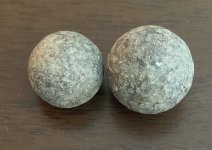redbronco
Sr. Member
- Mar 28, 2008
- 372
- 202
- Detector(s) used
-
Garrett AT Pro
Nokta Makro Simplex
- Primary Interest:
- All Treasure Hunting
We seem to have a good size Mississippi group on TNET, from the coast, H'burg, Jackson area and northern section. How would everyone feel about trying to plan a big hunt for all the MS hunters. It would take a little time to find a big area that would produce but it would be cool to meet everybody and do some digging. I am sure most of us won't mind driving some if we can get this planned. Of course it would be better for it to be in the central section but I am game for anywhere, Gulfport to Tupelo. If anyone is interested, throw-out some ideas, and maybe we can have this set for the spring or sooner.



